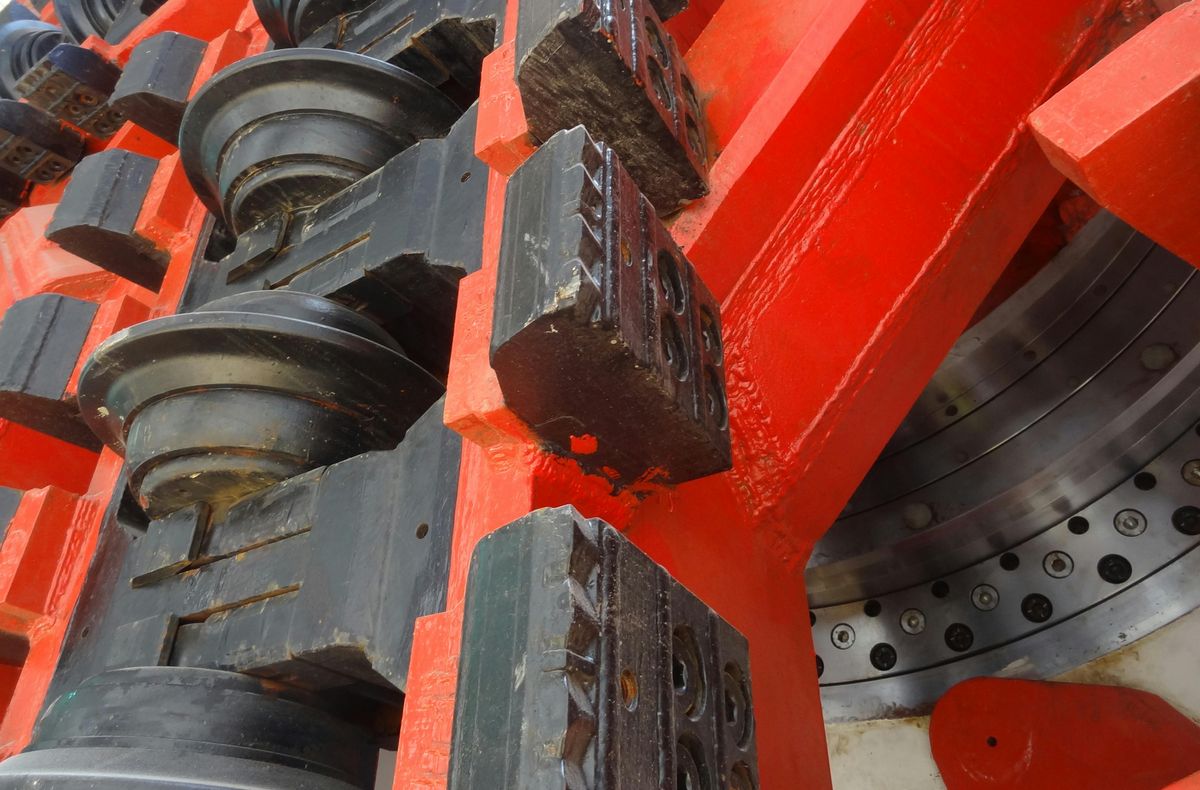The export of agricultural machinery presents unique challenges when it comes to collecting payments from international clients. The intricacies of legal frameworks, the viability of debt recovery, and the strategies for communication with debtors are critical factors that exporters must navigate. Financial considerations and the role of collection agencies also play significant roles in the process. This article examines the hurdles exporters face and outlines effective approaches for managing and recovering international debts.
Key Takeaways
- Understanding the legal frameworks and navigating different jurisdictions are crucial for international debt collection in agricultural machinery exports.
- Assessing the debtor’s financial status, the age and size of the debt, and the likelihood of successful recovery helps determine the viability of debt collection efforts.
- Effective debtor communication strategies, including persistent outreach and negotiation, are essential for resolving payment issues.
- Financial considerations, such as upfront legal costs and cost-benefit analysis of litigation, impact the decision to pursue legal action for debt recovery.
- Collection agencies play a pivotal role in export finance, with a structured recovery system that includes phases of recovery, agency fees, and the potential escalation to legal proceedings.
Understanding the Legal Framework for International Debt Collection
Navigating Different Jurisdictions
When we embark on the journey of cross-border debt collection, we’re not just chasing payments; we’re navigating a labyrinth of international laws. Each country’s legal system presents its own set of challenges, from procedural nuances to enforcement hurdles. Our approach is methodical, starting with a thorough understanding of the debtor’s local legal landscape.
We rely on the expertise of local attorneys, who act as our guides through these complex terrains. Their knowledge is crucial, as they provide insights into the feasibility of recovery within their jurisdiction. This partnership is the cornerstone of our strategy, ensuring that we respect local customs and legal requirements while pursuing our clients’ interests.
Our three-phase recovery system is designed to adapt to these diverse legal environments:
- Initial Contact: Establish communication and assess debtor’s willingness to pay.
- Legal Escalation: Engage local attorneys to apply pressure within legal boundaries.
- Potential Litigation: Proceed with legal action if deemed viable.
We must weigh the potential benefits against the risks and costs associated with legal action in foreign jurisdictions. It’s a delicate balance, one that requires careful consideration and strategic planning.
The Role of Local Attorneys in Debt Recovery
When we engage local attorneys, we’re not just hiring legal muscle; we’re tapping into a network of jurisdiction-specific knowledge. Local attorneys are pivotal in navigating the complexities of international debt recovery. They understand the nuances of local laws and can provide tailored strategies for each case.
Communication is key in the debt recovery process. Our affiliated attorneys initiate contact with debtors through various means, aiming to resolve conflicts amicably and preserve business relationships. Here’s what you can expect:
- Immediate drafting of demand letters on law firm letterhead
- Persistent attempts to contact the debtor via phone and written correspondence
- In-depth investigation of the debtor’s assets and financial status
We emphasize communication, negotiation, and legal expertise to resolve conflicts amicably, preserve relationships, and recover funds effectively.
If the debtor remains unresponsive, we assess the viability of litigation. Should you choose to proceed, our attorneys are ready to file a lawsuit on your behalf, including the recovery of all associated costs. Remember, the decision to litigate is yours, and we’re here to guide you through every step.
Implications of Legal Action on Debt Collection
When we face a stalemate in debt recovery, legal action becomes a pivotal consideration. Initial contact involves sending letters and skip-tracing debtors. If these efforts don’t yield results, we’re faced with a tough decision. We can either recommend closure of the case when recovery seems unlikely, or we can escalate to litigation, accepting the associated upfront costs.
Legal action is not a step to be taken lightly. It requires a careful cost-benefit analysis, considering the age and size of the debt, as well as the debtor’s financial status. Here’s a snapshot of potential upfront legal costs:
| Jurisdiction | Estimated Costs |
|---|---|
| Debtor’s Local | $600 – $700 |
Should we proceed with litigation and succeed, the rewards include the recovery of the debt and potentially the legal costs. However, if litigation fails, the case will likely be closed, and we absorb the costs without recovery.
We must weigh the probability of successful collection against the financial burden of legal proceedings. The decision to litigate is not just about the debt—it’s about the viability of its recovery.
Assessing the Viability of Debt Recovery
Investigating Debtor’s Assets and Financial Status
We dive deep to uncover the truth. A thorough investigation of the debtor’s assets is crucial. We assess their financial health, ensuring we’re not chasing a mirage. Our process includes:
- Skip-tracing to locate assets
- Analyzing financial statements
- Reviewing public records for liens or judgments
Persistence is key. We leave no stone unturned, as the debtor’s ability to pay dictates our next move. If assets are scarce, we may advise against litigation to avoid futile expenses.
We weigh the evidence carefully. If the probability of recovery is low, we recommend closing the case. This shields you from unnecessary costs.
When assets are sufficient, we consider legal action. But we’re transparent about the costs—court fees, filing charges, all laid out. You’ll know what’s at stake before making a decision.
Determining the Age and Size of the Debt
When we tackle the challenge of collecting payments for agricultural machinery exports, the age and size of the debt are pivotal. Older debts are trickier, often entangled in a web of legal and financial complexities. We must assess the debt’s age with precision, as it directly influences our recovery strategy and the associated fees.
Size matters too. Larger debts may justify the legal and collection costs, while smaller ones might not. It’s a balancing act between potential recovery and expenses incurred. Here’s a snapshot of our fee structure based on debt age and size:
| Age of Debt | Size of Debt | Collection Rate |
|---|---|---|
| < 1 year | Any | 30% – 27% |
| > 1 year | Any | 40% – 35% |
| Any | < $1000 | 50% |
Our multi-phase debt recovery system is designed to adapt to these variables, ensuring we make informed decisions at every turn.
We’re not just chasing debts; we’re strategizing for the most effective recovery. The role of local attorneys becomes crucial when legal action is on the table, but it’s the age and size of the debt that guide us to that juncture.
Evaluating the Probability of Successful Collection
We must weigh the odds of successful debt recovery with a pragmatic lens. The debtor’s financial landscape is our map; it guides our decision-making process. If the debtor’s assets are scant or encumbered, the likelihood of collection diminishes.
Probability is not just a number—it’s a strategy. We consider the age and size of the debt, as these factors significantly influence recovery chances. Older debts and smaller amounts often present steeper challenges.
Our approach is methodical:
- Assess the debtor’s solvency.
- Review the debt’s history.
- Calculate the cost versus potential recovery.
We stand at a crossroads with each case. The path we choose hinges on meticulous evaluation and clear-eyed judgment.
Ultimately, the decision to pursue collection is a balance of potential gain against the risk of futile efforts. Our expertise in environmental technology exports, with a focus on a three-phase recovery system, informs our recommendations for action or closure.
Strategies for Effective Communication with Debtors
Utilizing Multiple Contact Methods
We understand the importance of diversifying our approach when reaching out to debtors. Multiple contact methods are not just a strategy; they’re a necessity. By employing a mix of phone calls, emails, text messages, and faxes, we increase the likelihood of engaging with the debtor. It’s about persistence and presence.
In Phase One of the recovery process, we dispatch initial communication and conduct skip-tracing. Daily contact attempts are crucial to recover unsettled payments effectively and swiftly.
Our approach is systematic and relentless. Here’s a snapshot of our initial contact strategy:
- Send the first of four letters via US Mail within 24 hours of placing an account.
- Utilize skip-tracing to obtain the best financial and contact information.
- Make daily attempts to contact the debtor for the first 30 to 60 days.
If these efforts don’t yield results, we’re prepared to escalate to the next phase. We’re committed to recovering what’s owed to you, using every tool at our disposal.
The Importance of Timely and Persistent Outreach
We understand that time is of the essence. The sooner we reach out, the higher the chances of recovery. Delays can mean the difference between payment and a write-off. Our approach is methodical and relentless. We initiate contact within 24 hours of placing an account, ensuring that debtors understand the urgency of the situation.
Persistence is key. We don’t just send a single letter and hope for the best. Our strategy involves multiple touchpoints: calls, emails, texts, and faxes. We make daily attempts in the first 30 to 60 days, maximizing the pressure and the possibility of a resolution.
Our goal is clear: to secure payment swiftly and efficiently. We navigate through the noise, making our message heard loud and clear.
When it comes to outreach, consistency is our watchword. We don’t let up, and we don’t get discouraged. Each communication is an opportunity to negotiate and move closer to a resolution. Here’s a snapshot of our outreach efforts:
- Initial contact within 24 hours
- Daily attempts for the first 30 to 60 days
- Multiple methods: calls, emails, texts, faxes
We’re in it for the long haul, but we act fast. Because in debt recovery, time isn’t just money—it’s everything.
Negotiating Payment Resolutions
When we reach out to debtors, our goal is clear: achieve a resolution that satisfies both parties. We prioritize open dialogue and flexibility, understanding that each case is unique. Our approach is to negotiate terms that are fair and achievable, considering the debtor’s financial situation.
- We assess the debtor’s ability to pay and propose realistic payment plans.
- We’re prepared to offer settlements that can lead to quicker resolutions.
- We remain firm on the debt’s legitimacy while showing empathy to the debtor’s circumstances.
Our success hinges on finding the middle ground where both exporter and debtor feel the terms are manageable.
It’s essential to document every agreement meticulously, ensuring that all negotiated terms are clear and enforceable. The trust built during these negotiations can often lead to more favorable outcomes for future transactions.
Financial Considerations in Pursuing Legal Action
Understanding Upfront Legal Costs
When we decide to pursue legal action, understanding the upfront legal costs is crucial. These costs include court fees, filing fees, and other related expenses, typically ranging from $600 to $700. We must be transparent about these costs to set realistic expectations for recovery efforts.
- Court costs and filing fees: $600 – $700 (depending on jurisdiction)
- Collection rates (based on claim type and age):
- Under 1 year: 30% (1-9 claims) or 27% (10+ claims)
- Over 1 year: 40% (1-9 claims) or 35% (10+ claims)
- Under $1000: 50% regardless of claim count
- With attorney involvement: 50% of amount collected
We must weigh the potential recovery against these initial investments. If the probability of successful collection is low, we may recommend closing the case, incurring no further costs. However, if we proceed and litigation fails, rest assured, you will owe nothing more to our firm or affiliated attorney.
Analyzing Cost-Benefit of Litigation
When we consider taking legal action, we must weigh the potential gains against the costs involved. The decision hinges on a meticulous cost-benefit analysis. Upfront legal costs, such as court costs and filing fees, typically range from $600 to $700, depending on the debtor’s jurisdiction. These are sunk costs, paid out before any recovery is made.
Recovery rates vary based on the age and size of the debt, influencing our strategy. For instance:
- Accounts under 1 year: 30% of the amount collected.
- Accounts over 1 year: 40% of the amount collected.
- Small accounts under $1000: 50% of the amount collected.
We must also consider the contingency rates if we place accounts with an attorney, which stand at 50% of the amount collected, regardless of the debt’s age or size.
Ultimately, if litigation proves unsuccessful, the case is closed, and no further fees are owed to our firm or affiliated attorney. This no-recovery, no-fee model underscores the importance of a thorough initial assessment of the debtor’s assets and the likelihood of successful collection.
Contingency Rates and Their Impact on Recovery
When we decide to escalate to legal action, the financial stakes change. Contingency rates come into play, directly impacting our recovery efforts. These rates are a percentage of the amount collected, incentivizing successful recovery while mitigating upfront costs.
Contingency fees vary based on several factors, including the age and size of the debt, and whether the account is handled directly or through an attorney. Here’s a quick breakdown:
- For 1-9 claims, rates range from 30% to 50%.
- For 10 or more claims, rates decrease, ranging from 27% to 50%.
The decision to proceed with litigation is critical. We weigh the potential recovery against the contingency fees to determine if the pursuit is financially viable.
Remember, if litigation fails, we owe nothing further. This no-recovery, no-fee model aligns our interests with yours, ensuring we are both committed to the success of the debt recovery process.
The Role of Collection Agencies in Export Finance
Phases of the Recovery System
We’ve honed a three-phase Recovery System to efficiently reclaim funds. Phase One kicks off within 24 hours of account placement. It’s a blitz of communication: letters, skip-tracing, and persistent outreach. Our team’s daily attempts span 30 to 60 days, aiming for a swift resolution.
Should these efforts not yield results, we escalate to Phase Two. Here, our affiliated attorneys step in, wielding the weight of legal letterheads and relentless calls. If this phase still doesn’t break the deadlock, we face a critical juncture.
Phase Three presents a fork in the road: either we recommend case closure, or we gear up for litigation. The choice is yours, but it comes with a cost analysis. Should you opt for legal action, upfront fees apply, typically ranging from $600 to $700. Our rates are competitive, scaling with the number of claims and the age of the debt.
In this final phase, our strategic approach is clear: assess the likelihood of recovery and recommend the most effective steps to recover your company funds.
Agency Fees and Rate Structures
We understand the importance of transparency when it comes to agency fees. Our rate structures are designed to align with your recovery goals, ensuring that you only pay for successful collections. The more claims you submit, the lower the percentage we take. It’s a scale that rewards volume and efficiency.
Contingency rates are the norm in our industry, and we’ve tailored ours to be competitive. Here’s a quick breakdown:
- For 1-9 claims, expect 30% for accounts under a year old, and 40% for older accounts.
- Smaller debts under $1000 incur a 50% rate due to the increased effort required.
- Legal action? It’s a flat 50%, reflecting the complexity of such cases.
For 10 or more claims:
- The rates drop to 27% and 35% for newer and older accounts, respectively.
- Smaller debts see a reduced rate of 40%.
Remember, these fees only apply when we successfully recover your funds. No collection, no fee. It’s that simple.
The Decision to Escalate to Legal Proceedings
When we reach the crossroads of debt recovery, the decision to escalate to legal proceedings is critical. We must weigh the potential gains against the upfront costs and the impact on our relationship with the debtor. If the probability of successful recovery is high, we may opt for litigation, understanding that this path requires a financial commitment for court costs and filing fees, typically ranging from $600 to $700.
Our rates reflect the complexity and age of the debt. For instance, accounts under a year old are charged at 30% of the amount collected, while older accounts incur a 40% fee. Should litigation be necessary, the rate is set at 50% of the amount collected, regardless of the debt’s age.
We must consider the debtor’s financial status and the size of the debt. A small debt may not justify the expense and effort of legal action. Conversely, significant sums warrant a more aggressive approach. Our three-phase Recovery System guides us through these decisions, ensuring we act in our clients’ best financial interests.
In the end, our goal is to recover what is owed to you efficiently and ethically, without compromising future business opportunities.
Navigating the complexities of export finance can be daunting, especially when it comes to managing overdue accounts receivable. Collection agencies play a pivotal role in this process, ensuring that businesses receive the payments they are due. At Debt Collectors International, we specialize in providing top-tier collection services tailored to the unique needs of exporters. Our experienced team uses state-of-the-art skip tracing and asset location techniques to maximize recovery rates. Don’t let unpaid debts hinder your business growth. Visit our website to learn more about our services and how we can assist you in turning your receivables into revenue. Take the first step towards securing your finances by getting in touch with us today!
Frequently Asked Questions
What happens if the debt recovery is deemed not viable after investigation?
If after a thorough investigation of the debtor’s assets and the facts surrounding the case, the possibility of recovery is not likely, we will recommend closure of the case. You will owe nothing to our firm or our affiliated attorney for these results.
What are the upfront legal costs if I decide to proceed with litigation?
If you decide to proceed with legal action, you will be required to pay upfront legal costs which typically range from $600.00 to $700.00, depending on the debtor’s jurisdiction. These costs cover court costs, filing fees, and other related expenses.
What happens if attempts to collect via litigation fail?
If our attempts to collect via litigation fail, the case will be closed, and you will owe nothing to our firm or our affiliated attorney.
How does the fee structure work for the collection of debts?
Our fee structure is competitive and tailored, with rates depending on the number of claims and the age and size of the debt. Rates range from 27% to 50% of the amount collected, varying based on these factors.
What actions are taken during Phase One of the Recovery System?
During Phase One, several actions are taken within 24 hours of placing an account, including sending letters, skip-tracing, and making daily attempts to contact the debtor via various communication methods for the first 30 to 60 days.
What can I expect during Phase Two of the Recovery System?
In Phase Two, the case is forwarded to a local attorney within our network who will send letters on law firm letterhead and attempt to contact the debtor. If these attempts fail, we will provide a recommendation for the next step.





